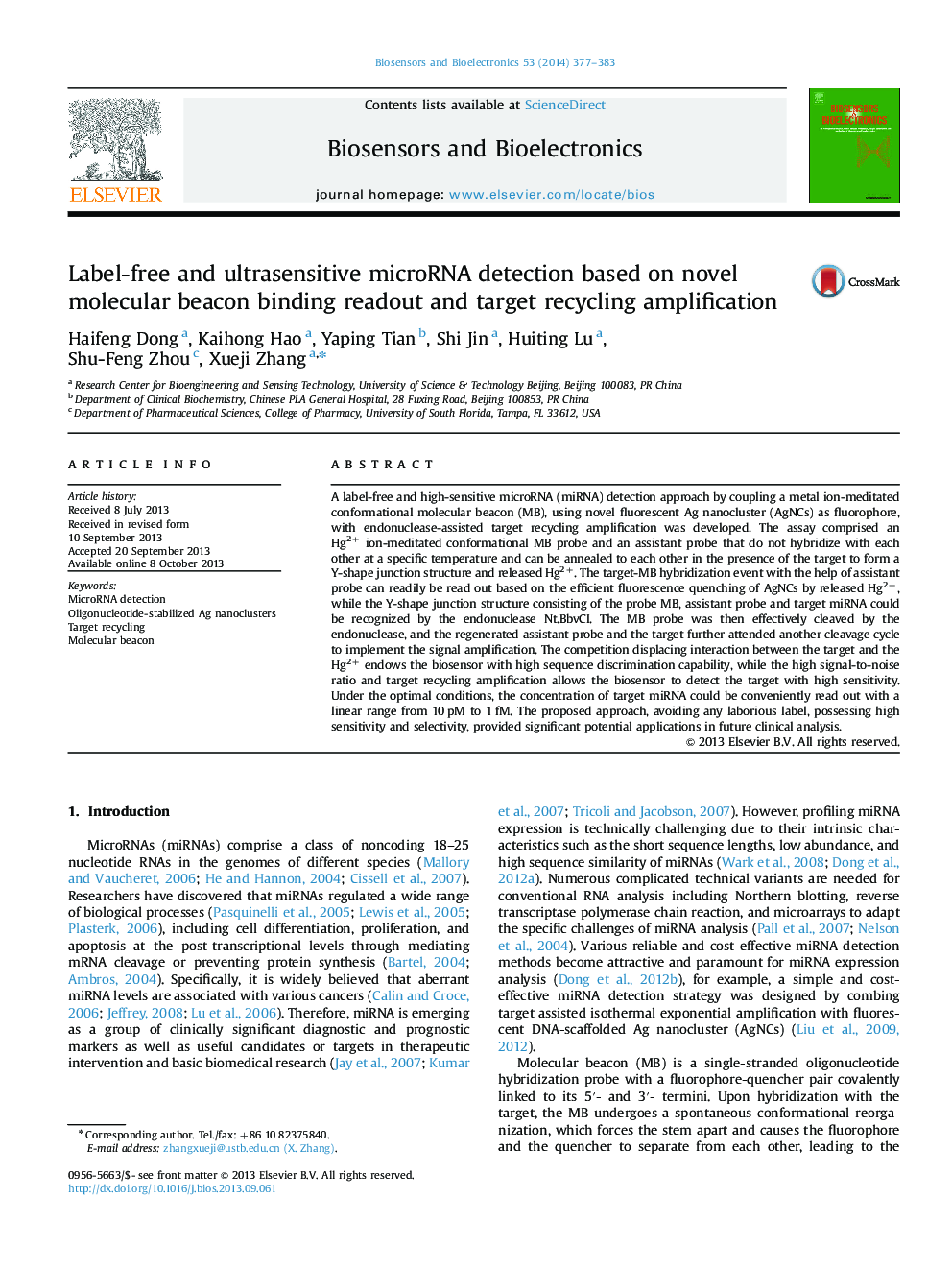| Article ID | Journal | Published Year | Pages | File Type |
|---|---|---|---|---|
| 866715 | Biosensors and Bioelectronics | 2014 | 7 Pages |
•A facile and sensitive miRNA biosensor coupling a conformational molecular beacon with target recycling amplification was developed.•The metal ion-meditated molecular beacon uses novel fluorescent Ag nanocluster (AgNCs) as fluorophore.•The competition displacing interaction between the target and the Hg2+ endows the biosensor with high sequence discrimination capability.•Target recycling amplification allows the biosensor to detect the target with high sensitivity.
A label-free and high-sensitive microRNA (miRNA) detection approach by coupling a metal ion-meditated conformational molecular beacon (MB), using novel fluorescent Ag nanocluster (AgNCs) as fluorophore, with endonuclease-assisted target recycling amplification was developed. The assay comprised an Hg2+ ion-meditated conformational MB probe and an assistant probe that do not hybridize with each other at a specific temperature and can be annealed to each other in the presence of the target to form a Y-shape junction structure and released Hg2+. The target-MB hybridization event with the help of assistant probe can readily be read out based on the efficient fluorescence quenching of AgNCs by released Hg2+, while the Y-shape junction structure consisting of the probe MB, assistant probe and target miRNA could be recognized by the endonuclease Nt.BbvCI. The MB probe was then effectively cleaved by the endonuclease, and the regenerated assistant probe and the target further attended another cleavage cycle to implement the signal amplification. The competition displacing interaction between the target and the Hg2+ endows the biosensor with high sequence discrimination capability, while the high signal-to-noise ratio and target recycling amplification allows the biosensor to detect the target with high sensitivity. Under the optimal conditions, the concentration of target miRNA could be conveniently read out with a linear range from 10 pM to 1 fM. The proposed approach, avoiding any laborious label, possessing high sensitivity and selectivity, provided significant potential applications in future clinical analysis.
Graphical abstractFigure optionsDownload full-size imageDownload as PowerPoint slide
